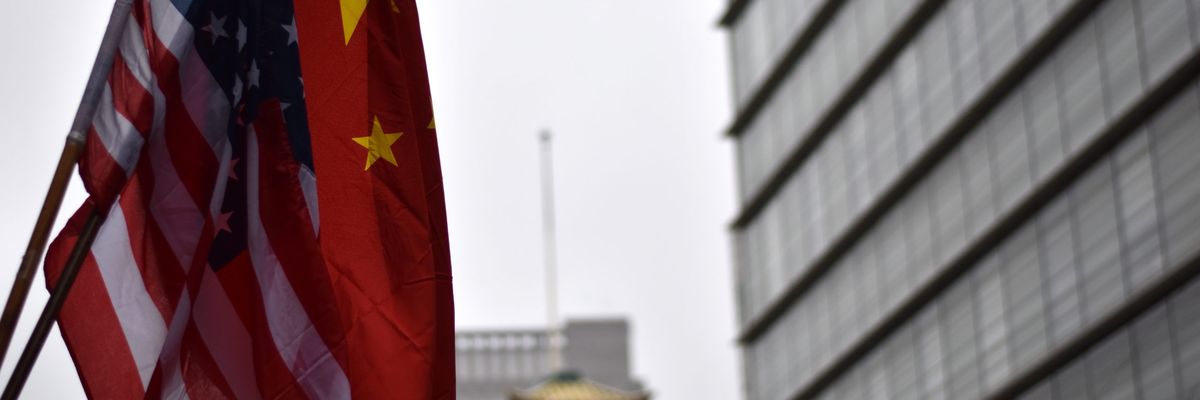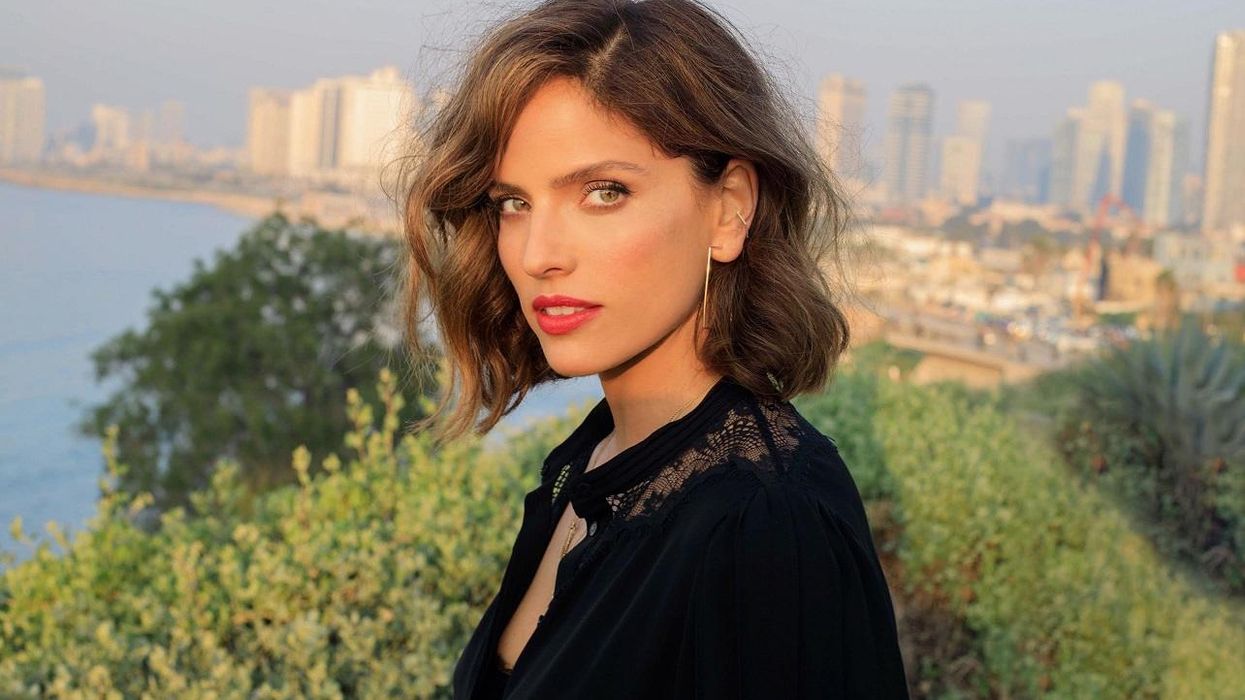Even during a pandemic, President Trump’s approach to China is crude and simple: public antagonism interrupted by slapdash trade talks. This might seem normal given the glorious victories the U.S. won with antagonism against Japan in 1945 and the Soviet Union in 1989.
But these exceptions overshadow the destruction and failure that typically flow from American hostility abroad: The Middle East becoming a killing field, Iraq being usurped by Iran, and 4,000 U.S. troops sacrificed for a pair of Pyrrhic victories.
My career supported this arrangement, from the bowels of the CIA where I tracked faceless terrorists around the world. As an agency analyst, I witnessed the gradual erosion of our strategic logic in the so-called “war on terror.” If we want to maintain global leadership in the twenty-first century, we must avoid these same missteps with China.
Antagonism toward China will fail. It will not deliver fair trade, stability in the Pacific Rim, or life-saving cooperation on climate change, nuclear weapons, or viral pandemics. Instead, it will breed the exact same results it has with Cuba, Iran, North Korea, and Russia: decades of stalemate with overtures of catastrophic war.
The U.S. should accommodate China, not by ignoring every Chinese transgression, but by stifling public hostility, ceding Beijing a sphere of influence, dramatically increasing diplomacy, and relegating pushback to bureaucratic channels and the international community.
This is not a surrender, nor a ceding of global hegemony to a nation that censors its top doctors and jails blind lawyers. It is a slow, deliberate warming of relations the U.S. should maintain even when Beijing tests our vigilance. It pushes tension down the chain of command and allows top leaders the room to develop an arrangement where cooperation can flourish undistracted.
It is, to be sure, an experiment, but one that could save the world from the worst ravages of climate change and the next pandemic. For backstopping, it leaves in place snapback responses if Beijing flirts with invading a neighbor or choking off shipping lanes. And it insists on the development and distribution of American-made 5G capabilities in the ostensible spirit of friendly commercial competition.
Being tough vs. playing nice
Antagonism has yielded little progress. It has not stopped Chinese ambition and likely stirred it. Thousands of COVID-19 victims could have lived if Chinese and American health sectors communicated better.
Climate change will exacerbate current and future viral outbreaks, and so quarantines and death could become our common lived experience unless the U.S. and China disarm and begin cooperating. We must do this now.
History is replete with analogies that support such a revision. Peaceful overtures by President Obama to Iran achieved what 36 years of hostility couldn’t: an agreement that halted Iran’s nuclear program. Another Obama overture in 2015 eased 54 years of hostility with Cuba where the two countries increased travel, commingled financial systems, and reopened embassies. Goodwill from these talks paid dividends even before the agreement was signed. In 2014, Cuba sent the most physicians per capita to Obama’s Ebola containment efforts in West Africa.
President Clinton achieved an agreement between Israelis and Palestinians. President Carter disarmed Israel and Egypt in an agreement that lasted decades. Peaceful overtures got nuclear weapon reduction deals out of the Russians and Soviets. Some of these deals expired, but diplomacy is a long-term, unsexy approach, that when it bears fruit, very often ends in a drastically more stable world.
Additional overtures to Iran or Cuba could have coaxed them deeper into the rules-based, U.S.-led international order where liberal democracy is an expected ideal. So too could this proceed with China.
What playing nice with China looks like
To succeed, Washington must cede a sphere of influence to Beijing, given that great powers notoriously bristle — and stay bristled — when their regional influence is checked. For example, it was likely post-WWI strictures upon Germany that helped germinate the anger that enabled the rise of Hitler’s ideology and war machine. It was also likely NATO’s expansion to Russia’s doorstep that inspired Vladimir Putin’s aggressions against Estonia, Georgia, and Ukraine.
Similarly, softening U.S. opposition to Chinese militarization in the South China Sea, arrests in Hong Kong, and bluster against Taiwan could incentivize Beijing into cooperating with the U.S. on the issues of climate disasters, viruses, and managing outer space. Diplomats will push this process forward, which is why the U.S. needs to hire hundreds more to replace the 60 percent who resigned under Trump’s first secretary of state, Rex Tillerson. Those officers should then help reform and re-engage the United Nations to serve as a front from which to communally pressure China toward more favorable policies.
Alongside foreign partners, the U.S. should also relegate pressure on Beijing to low-level bureaucratic channels — intelligence analysts, military commanders, and trade reps whose daily coordination with their Chinese counterparts ultimately sustains the relationship. This leaves U.S. presidents free to flatter the Chinese premier into drifting back toward our system by lavishing incentives for doing so. This arrangement involves unprecedented pride swallowing, an uncomfortable ceding of autonomy, and a patience not unlike a concerned parent toward a belligerent teenager. But such a move is dire enough to warrant the risk.
China’s bad branding is its undoing
Critics of this kind of constructive engagement with China will rightly worry that not rebuking China for stealing intellectual property, stalking U.S. satellites, and submarines, incarcerating Uighurs, or withholding epidemiological information will only embolden them to more mischief. But effective engagement does not lift all pressure, just the most overt forms. It amounts to a recalibrating of priorities and a readjusting of tactics to divert blowback and enable goodwill to thrive at the highest levels.
Many have argued that China only replaced the USSR in trying to topple the U.S., thus requiring a type of neo-containment strategy. This is also a misread analogy. Soviet communism flourished because it promised an end to poverty, elitist oppression, and western imperialism. In contrast, the Chinese system promises no improvements to the human condition except more trade with China on predatory Chinese terms — as Sri Lanka learned the hard way. Chinese commercial expansion is quickly losing its luster around the world. In Africa, where China boasts over 1,000 companies, more locals are accusing Chinese workers of not assimilating and repeatedly violating safety standards and local business norms.
In early 2020, journalist and author Fareed Zakaria declared that “China hardly qualifies as a mortal danger to the liberal international order.” When China “engages in cyberwarfare, it steals military and economic secrets...nothing like Moscow’s systematic efforts to disrupt and delegitimize Western democracy.”
Indeed, like Iran and Cuba, the potential exists for China to inch closer to becoming an American ally and partner. “It is worth noting,” Zakaria added, “that on the economic front, almost every charge leveled at China today...was leveled at Japan in the 1980s and 1990s.”
The idea of this kind of constructive engagement with global competitors has been a taboo since Neville Chamberlain claimed to have achieved “peace in our time” just before Hitler marched on Europe. Since then, America’s knee-jerk antagonism toward its rivals has caused destruction and stalemate, while our engagement has actively advanced world peace. Executed effectively, working with China could do much to pacify global relations broadly. Given the growing threats of COVID-19, climate change, and the next crisis we do not yet see coming, concerted rapprochement appears far more practical than antagonism.
















